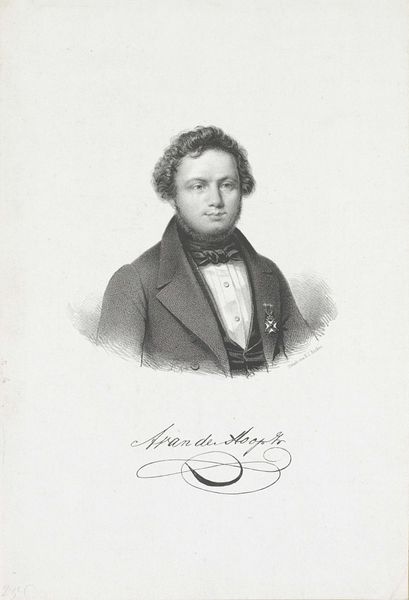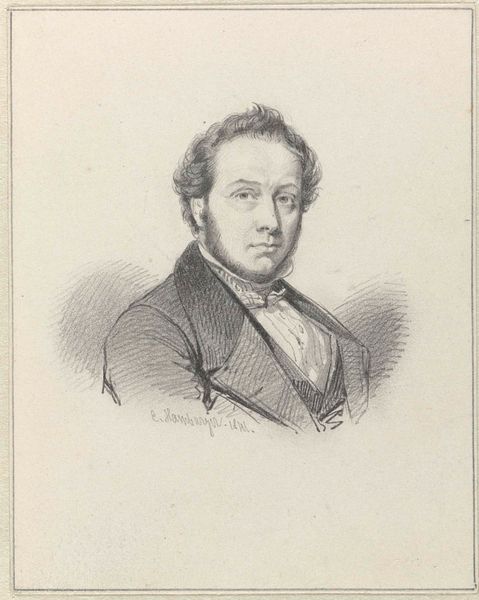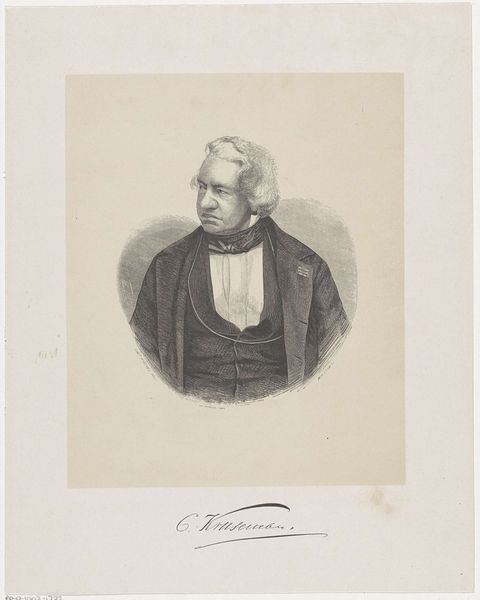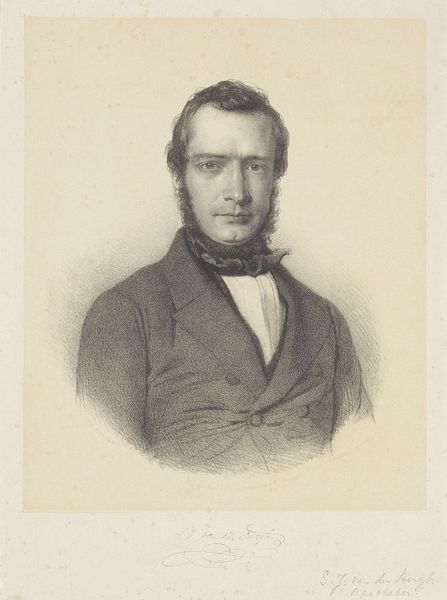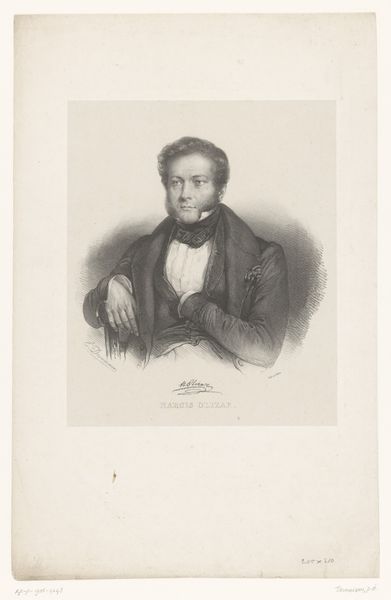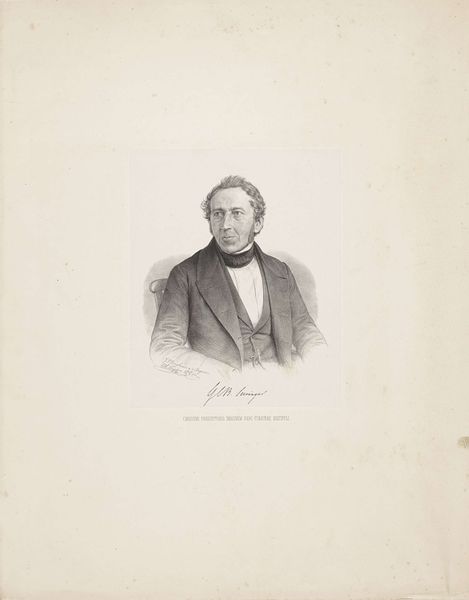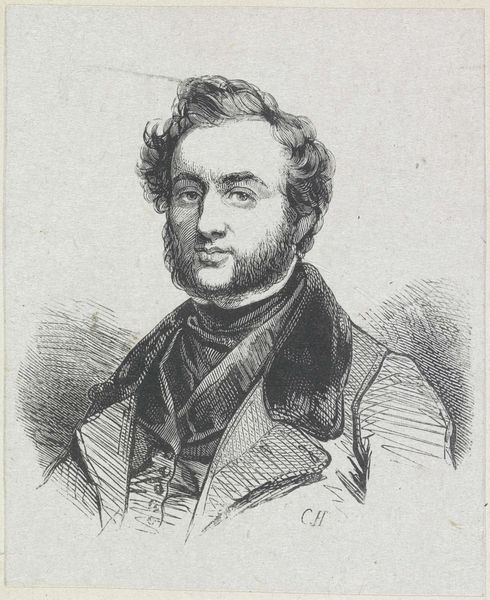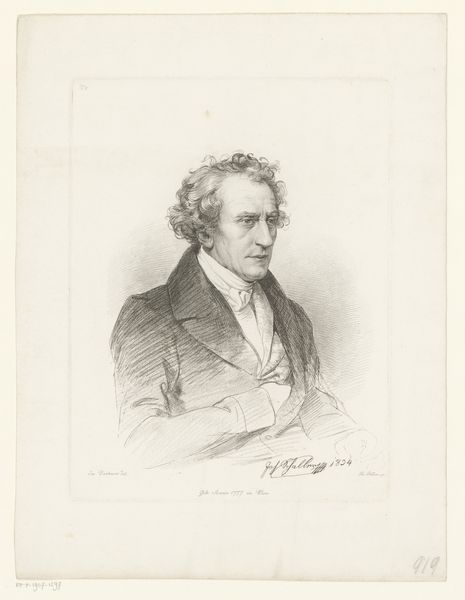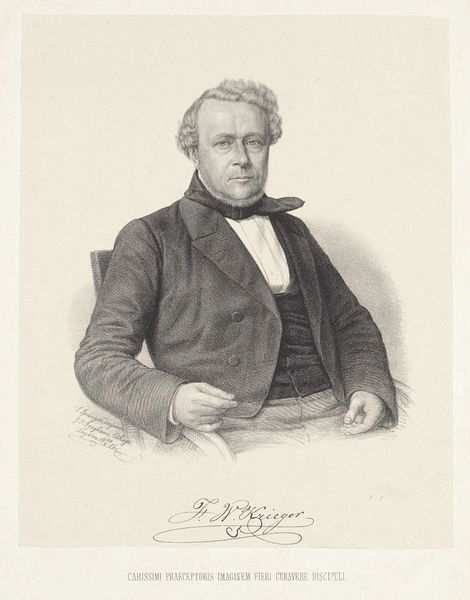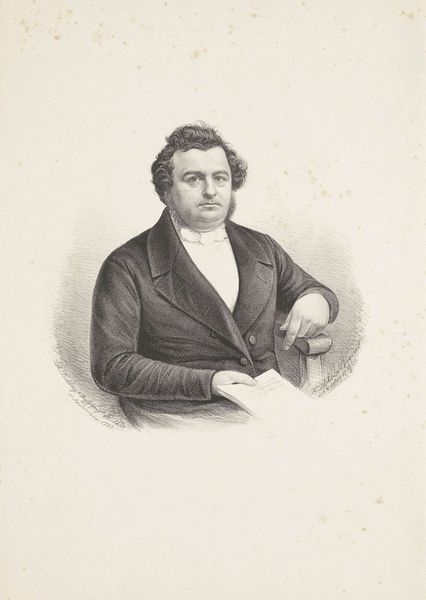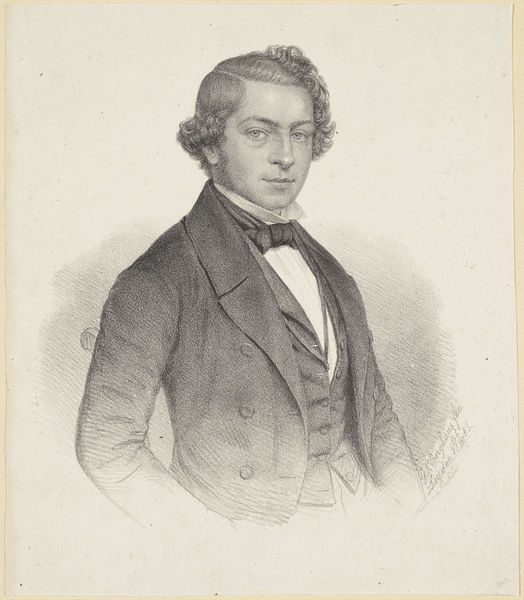
print, etching, engraving
#
portrait
#
pencil drawn
# print
#
etching
#
pencil sketch
#
charcoal drawing
#
pencil drawing
#
portrait drawing
#
engraving
#
realism
Dimensions: height 365 mm, width 276 mm
Copyright: Rijks Museum: Open Domain
Editor: This is "Portrait of Adriaan van der Hoop Jr." from between 1847 and 1883 by Adrianus Johannes Ehnle. It’s an engraving and etching, so a print, on paper. It almost looks like a very detailed pencil drawing. What jumps out at you about it? Curator: I am intrigued by the methods employed to create this piece. Printmaking, particularly engraving and etching, democratized image production during this period. We have to ask: how did this technology impact the creation and dissemination of images, particularly portraits, to a wider audience beyond the wealthy? Editor: So you're thinking about the process rather than just the image of the man himself? Curator: Precisely. Think about the labor involved in creating this print – the skilled artisan meticulously engraving the plate. This challenges our traditional notion of the artist as solely a genius creator. And how does the rise of these printed portraits influence the market and consumption of art? Is it about making it available or generating capital? Editor: It’s interesting to think of it as mass-produced rather than a singular work of art. Does knowing it’s a print change how we should value it? Curator: Value is assigned, never inherent. This print offers us a glimpse into the complexities of art production and distribution. The "originality" debates surrounding printmaking versus painting force us to consider art's value and social role in this era. And how was Ehnle, as the printmaker, situated in relation to the original portrait painter, if one existed? His labor relies on another’s artistic creation. Editor: So, beyond the individual, it shows a network of artistic and industrial labor? I hadn’t considered that before. Curator: Exactly. Understanding art through the lens of production reveals social dynamics often overlooked in traditional art historical approaches. Editor: I definitely see the print in a different way now, thank you!
Comments
No comments
Be the first to comment and join the conversation on the ultimate creative platform.
